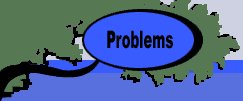A company makes two products, called X and Y,
from a mix of chemicals. The mix is made up of three raw materials
identified by the letters A, B, and C. At least 45% of the mix
must be raw material A and no more than 30% of the mix may be
raw material C. After processing the mix, the products are withdrawn
in the proportions: 40% is X, 20% is Y, and 40% is a waste product
that must be discarded.
Up to 1000 pounds of X can be sold for $12 per pound.
Product Y is sold for $18 per pound for any amount up to 2000
pounds. No more than 1000 pounds or X or 2000 pounds of Y may
be produced.
The processing cost of the mix is $1.50 per pound.
Material A costs $6 per pound for any amount. Material B costs
$3 per pound up to 2500 pounds. Raw material C is free for up
to 1500 pounds. No more than 2500 and 1500 pounds of raw materials
B and C are available respectively.
a. Solve this problem with a linear programming model. Describe
the optimum mix of raw materials and production levels for the
products. How much profit does the business make?
b. What restrictions in the problem are limiting the profit?
c. Change the model so that the simple upper bounds are
specified as explicit constraints. (If you previously specified
these using the simple upper bound option, change the bound
to a higher value 999999.)

Note that it is necessary to use explicit constraints to
get sensitivity information.
Solve the problem again and determine which of these
simple upper bounds you would like to change. Should the change
be up or down? Predict the profit of the new solution.
d. How much can you increase the cost of raw material B
increase before the solution changes? (Do all this without solving
the problem again.)
e. How much can you increase the limit on product X before
the variables in the basic solution change? (Do all this without
solving the problem again.)
f. Add the restriction that the mix must be at least 60%
raw material B. Solve the problem again and tell what happens
to the solution with this constraint?
g. Delete the constraint added in part f. Change the model
to remove the limitations on the sales of X and Y. What happens
to the solution?
|



